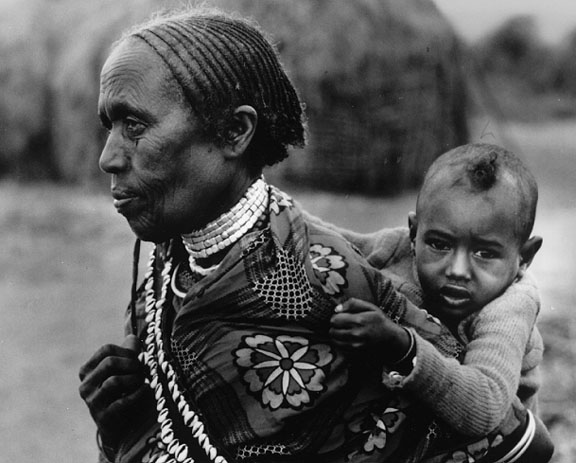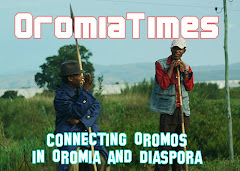September 3, 2007 of the Gregorian calendar — Historically, there are two main versions of Christian calendars - Julian and Gregorian. Both are religious by origin. According to the Julian calendar, it will soon be 2000 years since the birth of Christ. On the other hand, followers of the Gregorian calendar calculate that it has been 2007 years since Christ was born. Other religions and civilizations have their own calendars. For instance, in Islamic calendar, the Higira, today is Sha’ban 20, 1824. As another example, I will briefly introduce the Oromo calendar below.
In an eerie twist of irony, in just over a week, on the same day when USA commemorates the 9-11 victims, Ethiopia will celebrate a Julian millennium. This celebration comes about seven years after the rest of the world celebrated Y2K. Prime Minister Meles Zenawi’s government has already invested more cash on this single event than the Derg, annually celebrating its own rise to power, or Haile Sellasie celebrating his infamous birthdays while the people starved to death, literally. In this country, there is fondness to self-celebration without backing it with success of any sort. There is also a short memory to history; those who condemned the lavish birthday parties of Haile Sellasie and used this impropriety to rise to power later started more lavishly celebrating their own rise to power. And those who condemned the Derg for celebrating its murderous rise to power are now doing their own celebrations with even more glamour and cost. 16 giant LED screens have arrived from China and I also read that artist Beyonce will lead the New Year’s concert with pop-star Janet Jackson and rapper 50 Cent. Lavish indeed for a country that ranks 170 out of 177 in the United Nation’s Human Development Index. However, whether or not this millennium is a travesty or worthy event, whether or not this indeed is a good investment of the poor taxpayer’s money should generate an interesting debate which I am sure will be instructive. For now, let us focus more on the use of the calendar.
As stated above, Ethiopia uses a calendar which was introduced by Julius Caesar in 46 BC and enforced a year later - hence the name Julian calendar. The Julian calendar uses a solar year with a regular year of 365 days divided into 12 months, and a leap day added every four years. In the case of Ethiopia, each month has 30 days; the extra 5 or 6 days mark an additional 13th month, a nightmare for civic and administrative calculations and international interactions. There are numerous stories of missed appointments and miscalculated birthdays. The calendar has other serious shortcomings.
The average Julian calendar year is longer than Gregorian, causing an error that forces it to slowly drift backwards in the calendar year and move out of alignment with the solar year. As a result, the real astronomical annual cycle advances by about 11 minutes per year against the Julian year. This error is accumulated significantly over time.
Also, the addition of leap days to the months every four years is inaccurate and ultimately confusing. In contrast, the Gregorian leap year rule is accurate. For Orthodox Christians, Julian has another problem. All Christian churches have a rule to compute the date of Easter by defining 21 March as a reference point. This date is known as vernal equinox. Since Julian uses the lunar calendar to compute the date of Easter, which must always be on Sunday, the error resulting from the incompatibility with natural solar cycle moves Easter far off its point in the calendar cycle.
So, Julian does not produce a precise match to the solar year. The Gregorian was invented to correct this erroneous scheme. This modern calendar was first proposed by Aloysius Lilius and decreed by Pope Gregory XIII, for whom it was named in 1582. Because of its recognized accuracy in time reckoning, it was soon adopted by most advanced countries of those days, mainly catholic, but Protestant countries also followed soon. However, Russia, dominated by a conservative Orthodox church, remained Julian until 1917. It adopted Gregorian after the Russian Revolution, which is also known as the October Revolution. Interestingly, the revolution took place in November in Gregorian, not October, but kept its wrong date even after Gregorian was adopted. Greece continued to use Julian until 1923. Clearly, countries with Orthodox Church domination resisted the more modern calendar much longer. But eventually all countries appreciated the accuracy and superiority of Gregorian, and adopted it even for church uses. So, by 1927, most of the Julian countries have switched to Gregorian even though some of the Orthodox churches have retained Julian for internal church uses. Ethiopia is the only country that still officially uses the outdated Julian calendar: it adopted what it clearly didn’t own, and refused to drop it even when the entire world found the calendar to be faulty. Clearly, the Gregorian calendar has become the internationally accepted civil calendar. Here, for the record, the reader may be interested to know about the Oromo calendar, one that must be a source of pride to all Africans.
The Oromo calendar is based on astronomical observations of the moon in conjunction with seven or eight particular stars or star groups called Urjii Dhahaa (guiding stars). Each lunar day has a name, (Areeri Duraa, Areeri Ballo, Aduula Duraa, Aduula Ballo, Garba Duraa, Garba Ballo, Garba Dulacha, Bitaa Duraa, Bitaa Ballo, Sorsa, Algaajima, Arba, Walle, Basaa Duraa, Basaa Ballo, Maganatti Carraa, Maganatti Jaarraa, Maganatti Briifi, Salbaan Duraa, Salbaan Ballaa, Salbaan Dullachaa, Gardaaduma, Soonse, Uurruma, Lumaasa, Gidaada, and Ruuda). These 27 days of the month are permutated through the twelve months, in such a way that the 11 degree shift is accounted for in the solar cycle. Since the week (7 days) is strictly a religious definition with no astronomical connotation, the Oromo calendar has no formal definition for the days of the week. The 12 months are, with some regional variations, Cikawa, Sadaasa, Afraasa, Amaji, Guraandhala, Bitoteessa, Caamsa, Bufa, Waxabaji, Obora Gudda, Obora xiqqaa, and Birraa, which are integrated over a solar year.
Although the more accurate Gregorian calendar may be suitable in some societies, it also isolates the non-Christian populations of the country where such religious diversity exists. Certainly the Moslems and the Waqefatas of Ethiopia have no reason to celebrate this millennium. The Oromo calendar, a solar year with lunar months, has been recognized as scientific since it avoids religious influences, and would therefore be compatible with the Higira and the Gregorian calendars.
Controversies and legitimacy issues surrounding the extravagance of this Orthodox calendar’s millennium celebration in Ethiopia, while the country is still registered as one of the poorest in the world are abound. But there must also be a serious question about keeping a dead and obsolete system in this 21st century, a system proven and unanimously accepted to be erroneous. In spending millions of dollars to celebrate a miscalculated millennium of essentially the Orthodox Church with public fund, the Ethiopian regime also demonstrates its insensitivity to the religious diversity and mood of its non-Orthodox majority population.
* The Author is currently lives in London and can be reached at kallachadubbi@yahoo.com

















No comments:
Post a Comment